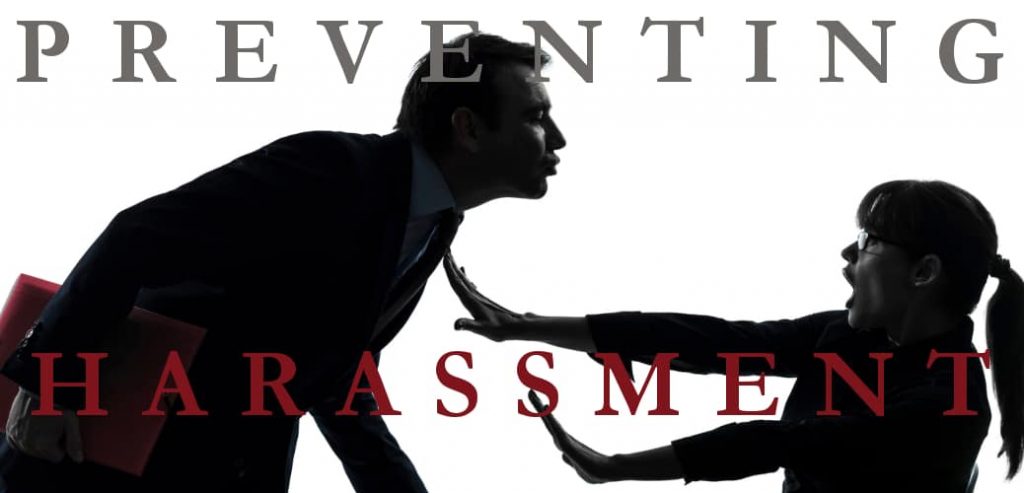Hiring an independent contractor rather than an employee can be a good choice for small businesses. Usually it is a short-term arrangement designed to accomplish a single task, with no need for the employer to control exactly how the task gets done. One of the collateral benefits of this kind of work arrangement is that the business is generally not legally responsible for the contractor’s misdeeds. The protection is not perfect though, and there are occasions when businesses may find themselves legally liable, so they should be aware of the need for additional layers of contractual and financial protection. Click here to learn more from 2018’s changes affecting General Contractors & Subcontractors in California – What you need to know [e294]
Respondeat Superior
The general rule, complete with Latin name, is that employers are responsible for the things that employees do in the course of their work. The idea is to protect third parties by allowing legal recovery against the party more likely to have assets. In a nod of fairness to employers, though, this rule does not extend to the actions of independent contractors whose actions are harder to control. The distinction between employees and independent contractors becomes very important when an injured customer or client decides to sue.
The U.S. Department of Labor generally looks at how much control the business owner exercises over the way in which the worker accomplishes a task. The IRS, which is interested in this distinction for tax purposes, looks at a longer list of factors including the worker’s expectation of the length of the arrangement, who owns the tools, where the work is accomplished and whether the task is central or collateral to the business owner’s business. States have their own sets of standards that may be more relevant for state court litigation. Applying the general rule that business owners are not responsible for the conduct of independent contractors proves to be far more complicated and nuanced than immediately obvious.
Several Risky Situations
The exceptions to the general legal rule fall into several broad and sometimes overlapping categories.
Misclassified employee
Courts look at the totality of a situation, not just what the employer and worker have decided to call it. There are so many legal advantages for the employer, including freedom from tax withholding obligations and payment of workers compensation premiums, that some undoubtedly cross a legal line in describing a given worker as an independent contractor.
It is also possible for working relationships to change, so that one that began as a genuinely independent relationship evolves into one where the requisite amount of control is exercised by the employer. There is a risk of serious penalties for misclassifying workers as independent contractors.
It can also evolve the other way, so that a trusted employee works with less and less supervision, perhaps from home, using his or her own equipment and/or social media contacts, possibly performing additional unrelated work for the original employer’s clients, gradually, morphing into an independent contractor. The risk for the original employer comes from work that is not supervised, at all.
Under the provisions of California, Assembly Bill 1897, enacted this fall, employers may be liable for payment of wages to workers supplied by an independent labor contractor if that labor contractor misclassifies those employees as independent contractors themselves, thus avoiding payment of overtime or the obligation to secure workers compensation coverage.
Employers who use staffing and recruiting firms should find out whether those workers are paid by the labor contractor as employees or independent contractors. Where those workers are paid as independent contractors, the client employer may want to exercise some additional due diligence, however burdensome this may seem, to ensure that the workers are being correctly classified by the staffing agency.
Inherently Dangerous Work
Several states recognize an exception to the rule that protects employers from liability to third parties for inherently dangerous work performed by an independent contractor. The theory is that employers should not avoid liability when there is a foreseeable risk of harm from the activity that the contractor was hired to do, especially if there are reasonable measures that the employer can take to reduce the risk.
So what kind of work is inherently dangerous? It varies from state to state, but may include activities such as spraying herbicide, or unloading baggage from a conveyor belt in an airport or painting traffic lines on a busy street.
California and the Doctrine of Peculiar Risk
California has adopted a variation of this rule that is highly protective of third parties when the work involved is unusually dangerous. The peculiar risk doctrine holds that a principal or employer may be liable in two situations.
The first is when the principal fails to require special precautions to avert the peculiar risk of injury related to the work. This might be applicable, for example, where a building contractor failed to require the subcontractor to install a railing on the subcontractor’s scaffold to protect the subcontractor’s workers from the risk of falling. The contractor could be liable for injuries to the workers resulting from a foreseeable fall.
The second situation arises when the principal requires special precautions to reduce the peculiar risk, but these directions are ignored by the independent contractor, as might be the case in the example above if the contractor required the subcontractor to repair the defective scaffold, but the subcontractor failed to do so. Under this second part of the doctrine of peculiar risk, the contractor would retain an obligation to supervise the subcontractor in order to protect the workers from foreseeable injuries.
Non-delegable Duties
Historically, there has been some concern that businesses might attempt to limit their overall risk profile by outsourcing the risker aspects of operation to third parties. Employers may not delegate the legal obligation to maintain a safe work place to independent contractors. If a security guard who worked as an independent contractor failed to protect an employee from workplace violence at the hands of another employee, it is highly unlikely that the employer could avoid liability by invoking the exception to the rule of respondeat superior.
Sexual harassment
In much the same way, employers have a duty to maintain workplaces that are free of sexual harassment. If an employer either knows or should know that an independent contractor is sexually harassing employees, the employer may also be liable for failing to protect employees.
Agents
An employer’s agents may be employees, or they may be independent contractors. Under the general principles of agency law, if a third party is injured because of the actions of a non-employee agent, when the agent is acting on behalf of the principal/employer, the employer may be liable as well as the agent. Imagine the situation of an independent salesperson who, in an excess of zeal, interferes with a competitor’s business to the extent that salesperson’s actions become a violation of law. Both the independent contractor salesperson and the employer may be on the hook for damages.
Negligent hiring
Businesses also have a duty to screen independent contractors carefully. In a recent Texas case, a taxi company that employed drivers as independent contractors was found civilly liable when a driver, an ex-con with a history of violent behavior, injured a passenger. The theory of liability was that the company had a duty to the public to exercise care in the hiring of drivers.
Strict liability
There is a very small area of business activity that courts have decided cannot be made safe, even with the exercise of great care. The examples cited are often of blasting cases. In strict liability cases, as these are termed, both the business and the independent contractor remain liable when a third party is injured, irrespective of the degree of care exercised. Often these situations are defined by statute. New York’s Scaffold Law, for example, makes building owners, as well as contractors, strictly liable for injuries to construction workers caused by falls if no safety equipment is provided.
California courts have achieved a similar result by a different route. The Second District Court of Appeal in Los Angeles has held that AAA tow truck drivers are employees because of the supervision exercised by the Auto Club, irrespective of the company’s contention that the drivers were independent contractors. The company thus retained liability for harm caused by the drivers, in much the same way that it would if a strict liability statute applied.
Both of these situations make clear that situations in which principals or employers remain liable for the actions of workers who they consider to be independent contractors may be very fact-specific and local.
The Extra Steps Business Owners Must Take
A good plaintiff’s attorney would, of course, sue all parties even plausibly connected with the harm suffered by a client. In many of the situations outlined above, the contractor would also face liability in the event of an award. A contract between a business and an independent contractor should contain an indemnification clause, requiring the contractor to pay for any legal liability or other costs incurred by the business in the event of a lawsuit. This could be very cold comfort if the contractor has no assets. For this reason, a business owner should also look to that extra layer of protection that comes from insurance.
It may make sense for small businesses to hire independent contractors rather than employees in some situations. If the independent contractor relationship is correctly structured it may limit the business’s legal risk arising from the contractor’s actions. But it does not eliminate it entirely. Cautious business owners should work with legal counsel to identify situations where special exceptions to the rule exempting them from liability exist. They should also ensure that the agreement with the contractor contains indemnity language and that insurance is adequate to cover any additional remaining liability.


![Is There a Right Way to Fire an Employee? We Ask the Experts [311]](https://www.pashalaw.com/wp-content/uploads/2021/02/Pasha_LSSB_FireAnEmployee_Website-1024x683.jpg)
![General Contractors & Subcontractors in California – What you need to know [e294]](https://www.pashalaw.com/wp-content/uploads/2018/01/iStock-666960952-1024x683.jpg)

![The Harassment Watershed [e292]](https://www.pashalaw.com/wp-content/uploads/2017/12/me-2-1024x748.jpg)
![How Businesses Should Handle Unpaid Bills from Clients [e282] What to do when a client won't pay.](https://www.pashalaw.com/wp-content/uploads/2016/12/How-Businesses-Should-Handle-Unpaid-Bills-to-Clients-1024x543.png)
![Why The Roger Ailes Sexual Harassment Lawsuit Is Far From Normal [e275]](https://www.pashalaw.com/wp-content/uploads/2016/07/WHY-THE-ROGER-AILES-SEXUAL-HARASSMENT-LAWSUIT-IS-FAR-FROM-NORMAL-1024x543.jpeg)

![Why Millions of Employees May Now Be Entitled to Overtime Pay [e270]](https://www.pashalaw.com/wp-content/uploads/2016/05/overtime-1024x543.jpg)





![Law in the Digital Age: Exploring the Legal Intricacies of Artificial Intelligence [e323]](https://www.pashalaw.com/wp-content/uploads/2023/11/WhatsApp-Image-2023-11-21-at-13.24.49_4a326c9e-300x212.jpg)
![Unraveling the Workforce: Navigating the Aftermath of Mass Layoffs [e322]](https://www.pashalaw.com/wp-content/uploads/2023/07/Untitled-design-23-300x212.png)
![Return to the Office vs. Remote: What Can Employers Legally Enforce? [e321]](https://www.pashalaw.com/wp-content/uploads/2023/01/Pasha_LSSB_321_banner-300x212.jpg)
![Explaining the Hans Niemann Chess Lawsuit v. Magnus Carlsen [e320]](https://www.pashalaw.com/wp-content/uploads/2022/10/LAWYER-EXPLAINS-7-300x169.png)
![California v. Texas: Which is Better for Business? [313]](https://www.pashalaw.com/wp-content/uploads/2021/07/Pasha_LSSB_CaliforniaVSTexas-300x212.jpg)
![Buyers vs. Sellers: Negotiating Mergers & Acquisitions [e319]](https://www.pashalaw.com/wp-content/uploads/2022/06/Pasha_LSSB_BuyersVsSellers_banner-300x212.jpg)
![Employers vs. Employees: When Are Employment Restrictions Fair? [e318]](https://www.pashalaw.com/wp-content/uploads/2022/05/Pasha_LSSB_EmployeesVsEmployers_banner-1-300x212.jpg)
![Vaccine Mandates Supreme Court Rulings [E317]](https://www.pashalaw.com/wp-content/uploads/2022/02/WhatsApp-Image-2022-02-11-at-4.10.32-PM-300x212.jpeg)
![Business of Healthcare [e316]](https://www.pashalaw.com/wp-content/uploads/2021/11/Pasha_LSSB_BusinessofHealthcare_banner-300x212.jpg)
![Social Media and the Law [e315]](https://www.pashalaw.com/wp-content/uploads/2021/10/WhatsApp-Image-2021-10-06-at-1.43.08-PM-300x212.jpeg)
![Defining NDA Boundaries: When does it go too far? [e314]](https://www.pashalaw.com/wp-content/uploads/2021/09/Pasha_LSSB_NDA_WordPress-2-300x212.jpg)
![More Than a Mistake: Business Blunders to Avoid [312] Top Five Business Blunders](https://www.pashalaw.com/wp-content/uploads/2021/06/Pasha_LSSB_Blunders_WP-1-300x212.jpg)
![Is There a Right Way to Fire an Employee? We Ask the Experts [311]](https://www.pashalaw.com/wp-content/uploads/2021/02/Pasha_LSSB_FireAnEmployee_Website-300x200.jpg)
![The New Frontier: Navigating Business Law During a Pandemic [310]](https://www.pashalaw.com/wp-content/uploads/2020/12/Pasha_LSSB_Epidsode308_Covid_Web-1-300x200.jpg)
![Wrap Up | Behind the Buy [8/8] [309]](https://www.pashalaw.com/wp-content/uploads/2020/11/Pasha_BehindTheBuy_Episode8-300x200.jpg)
![Is it all over? | Behind the Buy [7/8] [308]](https://www.pashalaw.com/wp-content/uploads/2020/09/iStock-1153248856-overlay-scaled-300x200.jpg)
![Fight for Your [Trademark] Rights | Behind the Buy [6/8] [307]](https://www.pashalaw.com/wp-content/uploads/2020/07/Fight-for-your-trademark-right-300x200.jpg)
![They Let It Slip | Behind the Buy [5/8] [306]](https://www.pashalaw.com/wp-content/uploads/2020/06/Behind-the-buy-they-let-it-slip-300x200.jpg)
![Mo’ Investigation Mo’ Problems | Behind the Buy [4/8] [305]](https://www.pashalaw.com/wp-content/uploads/2020/05/interrobang-1-scaled-300x200.jpg)
![Broker or Joker | Behind the Buy [3/8] [304] Behind the buy - Broker or Joker](https://www.pashalaw.com/wp-content/uploads/2020/04/Joker-or-Broker-1-300x185.jpg)
![Intentions Are Nothing Without a Signature | Behind the Buy [2/8] [303]](https://www.pashalaw.com/wp-content/uploads/2020/04/intentions-are-nothing-without-a-signature-300x185.jpg)
![From First Steps to Final Signatures | Behind the Buy [1/8] [302]](https://www.pashalaw.com/wp-content/uploads/2020/04/first-steps-to-final-signatures-300x185.jpg)
![The Dark-side of GrubHub’s (and others’) Relationship with Restaurants [e301]](https://www.pashalaw.com/wp-content/uploads/2015/04/When-Competition-Goes-Too-Far-Ice-Cream-Truck-Edition-300x201.jpg)
![Ultimate Legal Breakdown of Internet Law & the Subscription Business Model [e300]](https://www.pashalaw.com/wp-content/uploads/2019/05/Ultimate-Legal-Breakdown-of-Internet-Law-the-Subscription-Business-Model-300x196.jpg)
![Why the Business Buying Process is Like a Wedding?: A Legal Guide [e299]](https://www.pashalaw.com/wp-content/uploads/2019/03/futura-300x169.jpg)
![Will Crowdfunding and General Solicitation Change How Companies Raise Capital? [e298]](https://www.pashalaw.com/wp-content/uploads/2018/11/Will-Crowdfunding-and-General-Solicitation-Change-How-Companies-Raise-Capital-300x159.jpg)
![Pirates, Pilots, and Passwords: Flight Sim Labs Navigates Legal Issues (w/ Marc Hoag as Guest) [e297]](https://www.pashalaw.com/wp-content/uploads/2018/07/flight-sim-labs-300x159.jpg)
![Facebook, Zuckerberg, and the Data Privacy Dilemma [e296] User data, data breach photo by Pete Souza)](https://www.pashalaw.com/wp-content/uploads/2018/04/data-300x159.jpg)
![What To Do When Your Business Is Raided By ICE [e295] I.C.E Raids business](https://www.pashalaw.com/wp-content/uploads/2018/02/ice-cover-300x159.jpg)
![General Contractors & Subcontractors in California – What you need to know [e294]](https://www.pashalaw.com/wp-content/uploads/2018/01/iStock-666960952-300x200.jpg)
![Mattress Giants v. Sleepoplis: The War On Getting You To Bed [e293]](https://www.pashalaw.com/wp-content/uploads/2017/12/sleepopolis-300x159.jpg)
![The Harassment Watershed [e292]](https://www.pashalaw.com/wp-content/uploads/2017/12/me-2-300x219.jpg)
![Investing and Immigrating to the United States: The EB-5 Green Card [e291]](https://www.pashalaw.com/wp-content/uploads/2012/12/eb-5-investment-visa-program-300x159.jpg)
![Responding to a Government Requests (Inquiries, Warrants, etc.) [e290] How to respond to government requests, inquiries, warrants and investigation](https://www.pashalaw.com/wp-content/uploads/2017/10/iStock_57303576_LARGE-300x200.jpg)
![Ultimate Legal Breakdown: Employee Dress Codes [e289]](https://www.pashalaw.com/wp-content/uploads/2017/08/Ultimate-Legal-Breakdown-Template-1-300x159.jpg)
![Ultimate Legal Breakdown: Negative Online Reviews [e288]](https://www.pashalaw.com/wp-content/uploads/2017/06/Ultimate-Legal-Breakdown-Online-Reviews-1-300x159.jpg)
![Ultimate Legal Breakdown: Social Media Marketing [e287]](https://www.pashalaw.com/wp-content/uploads/2017/06/ultimate-legal-breakdown-social-media-marketing-blur-300x159.jpg)
![Ultimate Legal Breakdown: Subscription Box Businesses [e286]](https://www.pashalaw.com/wp-content/uploads/2017/03/ultimate-legal-breakdown-subscription-box-services-pasha-law-2-300x159.jpg)
![Can Companies Protect Against Foreseeable Misuse of Apps [e285]](https://www.pashalaw.com/wp-content/uploads/2017/01/iStock-505291242-300x176.jpg)
![When Using Celebrity Deaths for Brand Promotion Crosses the Line [e284]](https://www.pashalaw.com/wp-content/uploads/2017/01/celbrity-300x159.png)
![Are Employers Liable When Employees Are Accused of Racism? [e283] Racist Employee](https://www.pashalaw.com/wp-content/uploads/2016/12/Are-employers-liable-when-an-employees-are-accused-of-racism-300x159.jpg)
![How Businesses Should Handle Unpaid Bills from Clients [e282] What to do when a client won't pay.](https://www.pashalaw.com/wp-content/uploads/2016/12/How-Businesses-Should-Handle-Unpaid-Bills-to-Clients-300x159.png)
![Can Employers Implement English Only Policies Without Discriminating? [e281]](https://www.pashalaw.com/wp-content/uploads/2016/11/Can-Employers-Impliment-English-Only-Policies-Without-Discriminating-300x159.jpg)
![Why You May No Longer See Actors’ Ages on Their IMDB Page [e280]](https://www.pashalaw.com/wp-content/uploads/2016/10/IMDB-AGE2-300x159.jpg)
![Airbnb’s Discrimination Problem and How Businesses Can Relate [e279]](https://www.pashalaw.com/wp-content/uploads/2016/09/airbnb-300x159.jpg)
![What To Do When Your Amazon Account Gets Suspended [e278]](https://www.pashalaw.com/wp-content/uploads/2016/09/What-To-Do-When-Your-Amazon-Account-Gets-Suspended-1-300x200.jpg)
![How Independent Artists Reacted to Fashion Mogul Zara’s Alleged Infringement [e277]](https://www.pashalaw.com/wp-content/uploads/2016/08/How-Independent-Artists-Reacted-to-Fashion-Mogul-Zaras-Alleged-Infringement--300x159.jpg)
![Can Brave’s Ad Replacing Software Defeat Newspapers and Copyright Law? [e276]](https://www.pashalaw.com/wp-content/uploads/2016/08/Can-Braves-Ad-Replacing-Software-Defeat-Newspapers-and-Copyright-Law-300x159.jpg)
![Why The Roger Ailes Sexual Harassment Lawsuit Is Far From Normal [e275]](https://www.pashalaw.com/wp-content/uploads/2016/07/WHY-THE-ROGER-AILES-SEXUAL-HARASSMENT-LAWSUIT-IS-FAR-FROM-NORMAL-300x159.jpeg)
![How Starbucks Turned Coveted Employer to Employee Complaints [e274]](https://www.pashalaw.com/wp-content/uploads/2016/07/iStock_54169990_LARGE-300x210.jpg)
